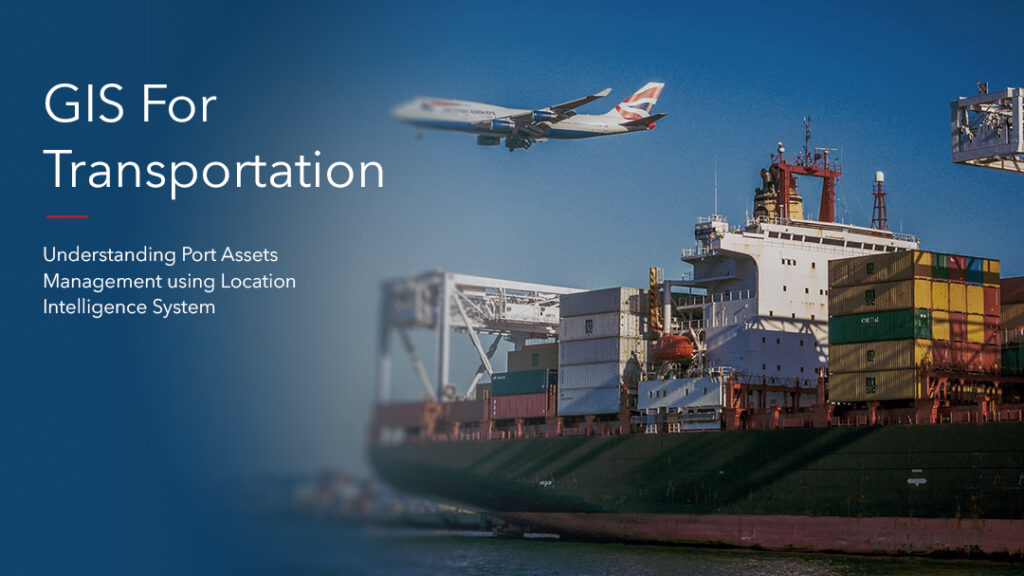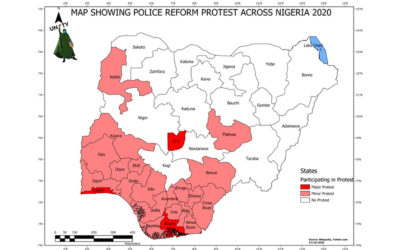GIS for Transportation
Port Assets Management with Location Intelligence Systems.
Location plays a critical role in all transportation activities. The recent advances in GIS (geographic information system) technologies have resulted in the development of effective GIS techniques for the management of infrastructure data as it is able to dive deeper into understanding the capabilities, requirements, and limitations of available resources required at the forefront of all operations.
Infrastructural operations today require the use of massive modern technologies, as base designs, architectural trends, and distribution models. Climate monitoring channels, security issues and labour expertise tend to evolve with present authorities. GIS has taken a lead role in these advancements as technological superiority is essential for planning operations, managing assets and logistics. It also provides useful database management techniques and software integration platforms to manipulate different data types to support infrastructural activities.
Using GIS in Transportation
Generally, the use of GIS for data processing requires data input, manipulation, analysis, and sharing of information. Although this module has enhanced in so many ways, customized geospatial outputs still requires modern hardware, application integrations as well as exemplary expertise to develop solutions and undertake a range of operations. Within the transportation Industry, GIS has gained significant recognition today with the vast patronizing of modern public transit businesses and shipping activities. Monitoring, and evaluation has significantly improved and has becomes more user friendly as customized solutions are being developed for transportation businesses which can be ran on any device, anytime and anywhere.
Although the solutions are also highly dependent on visualization and analytical methods, this has also made it very simple for decision makers to leverage GIS technology in this industry. In terms of infrastructure, GIS becomes very significant in planning, monitoring, and managing complex modules designed to facilitate the engineering of existing and new transportation routes, examining environmental factors, checking safety and security, improving operational workflows and improving data sharing and storage methods.
Ports and Shipping Management
Today, the call for an efficient and effective facility management at the port cannot be ignored as antiquated methods have been compromised, especially in terms of security and environmental management. Other challenges such as port operation modules, infrastructure and expansion planning among others require detailed, up-to-date information and careful analysis to produce optimal results.
With the power of Geographic information system (GIS) technology, location intelligence now grants professionals a great competitive advantage as they can now incorporate all port assets in one holistic platform for managing workflows and operations while ensuring the effective use of labour resources, logistics and maintaining a good level of security.
Benefits
GIS offers opportunities for advancement in navigation, security, infrastructural expansion, and several others to meet the demands for cost-effective capital investments and strategic asset management decisions. Essentially, the goal is to achieve greater efficiency, optimum operation levels, efficient use of limited resources and effective facility management by providing the user with a platform capable of integrating different port data which can help to track assets and visualize operations to improve productivity in different sections.
GIS improves the efficient use of assets in the port and shipping industry in the following ways.
• Infrastructure and Expansion Planning
The use of GIS technology in monitoring infrastructure is increasingly being utilized due to its capability of handling complex procedures required to effectively visualize operational activities on at the port. As Land-use also serves as an important factor in port and shipping operations, GIS provides the perfect platform to measure exploited and underutilized spaces designated for various activities which is taken into consideration when it comes to expansion planning. Other factors such as hazards, energy consumption and available technologies are also include in the development of a comprehensive plan to enhance the available infrastructure.
• Environmental Management
The issues surrounding the environment in general is very vital as it is regarded as one of the most essential factors that is taken into consideration whenever a project is undertaken on the port. GIS technology assists users to uniquely identify spatial differences which guides them in the making of the most sensitive decisions. Irrespective of the function of the land-use, the integration of both demographic and vectorized or digitalized data helps users to quickly conclude on measures required to engage in specific activities as the visualized data on the environment guides in the process.
• Facility and Utility Management
Facility and Utility Management speaks more about assets management, inventory, and utility control. This requires a seamless coordination of data collated from different facilities to provide a module necessary for monitoring the day-to-day operational activities as well as to maintain or track the usage of the available utilities. This becomes a cost-effective way of managing the utilities and facilities on the port.
• Security Operations
Comprehensive transportation facility protection requires the cooperation and close coordination of various agencies and the integration of different technologies and information sources. GIS integrates multiple sources of information, displays them on a map or satellite image, and delivers the resultant situational awareness on a secure network. You can combine real-time tracking of assets and vehicles with sources such as live closed-circuit television cameras to deliver a real-time security view of your transportation facilities. These capabilities make GIS an essential technology for managing a transportation security framework
• Port Operations
The demand for operational efficiency and increased safety in modern transportation systems requires access to detailed and real-time information. GIS provides management solutions that integrate data from different operational areas as it can also track and analyze assets over space and time and provide insight through visualization of information on maps, dashboards, and reports.
• Public Information
Shipping Channels Location and Restricted Area Awareness are essential in the allocation of resources. With the integration of GIS, this information becomes readily available to both field workers, and decision makers on the port to facilitate activities.
GIS has completely transformed the Port and Shipping industry as the competitive advantage benefited from the integration GIS technology today, has effectively enhanced planning, security, management, and operational activities in the industry.



